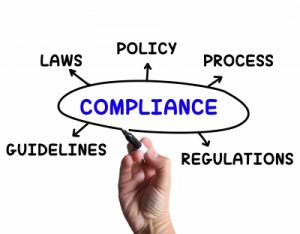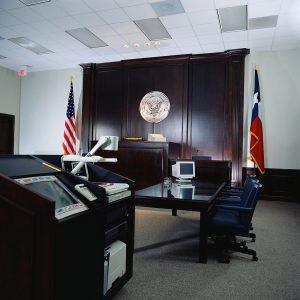Harvard and OCR Enter into a Resolution Agreement – More Guidance for the Rest of Us
January 6, 2015
 In the closing weeks of 2014, OCR announced its findings with respect to Harvard Law School’s Title IX compliance, as well as a resolution agreement which subjects the Law School, and the University, to monitoring for at least the next three years. As just one indication of how complicated it has become to comply with the government’s view of Title IX, in July of 2014 the University, as a whole, issued a new Title IX policy and procedures, which, despite this institution’s unmatched resources and compliance efforts, OCR still noted in its Law School findings were deficient in some respects. Highlighted below are the main areas (of more general application to other institutions) in which OCR either found the institution’s policy and procedures in need of revision or otherwise required it to undertake action. While this list does not provide an exhaustive checklist, by any means, of all the items that must be in policies and procedures in order to be compliant, it does provide a useful checklist of some of the “detail” OCR expects to find in those policies and procedures. Specifically OCR required:
In the closing weeks of 2014, OCR announced its findings with respect to Harvard Law School’s Title IX compliance, as well as a resolution agreement which subjects the Law School, and the University, to monitoring for at least the next three years. As just one indication of how complicated it has become to comply with the government’s view of Title IX, in July of 2014 the University, as a whole, issued a new Title IX policy and procedures, which, despite this institution’s unmatched resources and compliance efforts, OCR still noted in its Law School findings were deficient in some respects. Highlighted below are the main areas (of more general application to other institutions) in which OCR either found the institution’s policy and procedures in need of revision or otherwise required it to undertake action. While this list does not provide an exhaustive checklist, by any means, of all the items that must be in policies and procedures in order to be compliant, it does provide a useful checklist of some of the “detail” OCR expects to find in those policies and procedures. Specifically OCR required:
- An explicit statement that:
- the institution has an “obligation” to address incidents of sexual harassment (which includes assault) that “it knows or should know about, even when a complaint or report is not filed,” and to respond to all complaints and reports of incidents it “knows or should know about”;
- complainants have a right to proceed simultaneously with a criminal investigation and a Title IX investigation and that the University may defer its investigation for only a limited time for law enforcement fact gathering and then will promptly resume its investigation;
- “mediation” (which OCR seems to view as but one type of informal resolution) will not be used in sexual assault and sexual violence cases, and students who report (the broader category of) sexual harassment will not be required to resolve the problem directly with the alleged harasser;
- the institution will “take steps to prevent recurrence of harassment and to correct its discriminatory effects on the complainant and others”;
- written notice will be provided to both parties about the outcome of any investigation and/or disciplinary proceeding and “as permitted” the written notice will be provided to the complainant about “the sanction imposed on a student who was found to have engaged in harassment when the sanction directly relates to the harassed student”;
- Clear language that the University has an “obligation to consider the effects of off-campus conduct when evaluating whether there is a hostile environment in a University program or activity”;
- That the institution maintain (but it doesn’t say for how long) “records of each informal and formal complaint, including individuals involved, investigative steps taken, documentation received, individuals interviewed, decisions reached, and reason(s) for the decision(s) reached”;
- Language that makes clear that in the event informal procedures are available, “a party” may end informal proceedings at any time and move to a formal process (given OCR’s general view that both parties are to be treated throughout in an equivalent fashion, one might interpret this reference to “party” to mean either complainant or respondent, but that is not clear);
- The designation of reasonable prompt timeframes for each major stage of the proceedings, including a description of factors that may extend the timeframes (such as complexity of the investigation and/or severity and extent of the alleged conduct);
- The email address for each designated Title IX Coordinator;
- That the institution inform the parties at regular intervals of the status of the proceeding; and
- An explicit prohibition of public hearings in cases involving sexual assault or violence.
The findings letter also repeats the need for Title IX policies to address complaints brought against third party, non-campus respondents, as well as the institution’s need to check with complainants to ensure interim measures are effective and, if not, to identify alternatives. In what has become standard fare, OCR is also requiring a climate survey (the contents of which has to be approved by OCR) for each of the three years covered by the monitoring period. Finally, the resolution agreement covers training, giving express approval to in person or on line training. For staff responsible for recognizing and reporting violations of the policy, and those involved in processing, investigating, resolving and or/reviewing complaints or other coordination of Title IX compliance, training at a minimum must include how to handle complaints or other reports of sexual harassment, sexual assault and sexual violence; the institution’s grievance procedures; and confidentiality requirements. For all administrators, faculty, residential staff and others who interact with students on a regular basis, training must provide attendees with essential guidance and instruction on recognizing, appropriately addressing and reporting allegations and complaints (including the difference between sex discrimination, sexual harassment, sexual assault, and sexual violence), the institution’s responsibilities under Title IX to address allegations, including the availability of interim steps, and confidentiality. New employees are to be trained within 90 days of hire. Institutions are well advised to review their policies and procedures to make sure these issues are covered.


 Under Title IX, the concept of “responsible employee” has a great deal of significance, as recently reaffirmed by OCR in its
Under Title IX, the concept of “responsible employee” has a great deal of significance, as recently reaffirmed by OCR in its 
 With students, faculty and other groups increasingly vocal about institutional responses to campus rape and sexual assault, President Obama has announced the creation of The White House Task Force on Protecting Students from Sexual Assault. The group will include cabinet level leaders and US Attorney General Eric Holder. Under Title IX, colleges and universities are required to respond promptly to reports of campus rape and sexual assault. An increasing number of students have filed federal claims of sex discrimination, alleging that their institution had not adequately responded in cases where they have been sexually assaulted. At the same time, many college administrators have expressed frustration with the US Education Department’s Office for Civil Rights, finding that OCR does not fully understand the realities involved in addressing sexual assault on campuses, particularly when it comes to the student disciplinary process, and that there is confusion regarding exactly what OCR expects of them. The President has charged the Task Force with developing “best practices” for preventing and responding to rape and sexual assaults; to assure compliance with existing federal laws governing colleges; and to make available to the public individual college’s compliance with these laws. The President also asked the Task Force to improve coordination among federal agencies dealing with this issue, and to increase the transparency of federal enforcement efforts. In announcing the Task Force, the President indicated that the Task Force will look for ways to work collaboratively with colleges to develop these recommendations, though the Task Force will not include any members of the higher education community. The Task Force’s recommendations are to be submitted to the President in 90 days, and a full report on implementing those recommendations is due in one year. Bond will be following closely the work of the Task Force, and will keep clients updated on developments.
With students, faculty and other groups increasingly vocal about institutional responses to campus rape and sexual assault, President Obama has announced the creation of The White House Task Force on Protecting Students from Sexual Assault. The group will include cabinet level leaders and US Attorney General Eric Holder. Under Title IX, colleges and universities are required to respond promptly to reports of campus rape and sexual assault. An increasing number of students have filed federal claims of sex discrimination, alleging that their institution had not adequately responded in cases where they have been sexually assaulted. At the same time, many college administrators have expressed frustration with the US Education Department’s Office for Civil Rights, finding that OCR does not fully understand the realities involved in addressing sexual assault on campuses, particularly when it comes to the student disciplinary process, and that there is confusion regarding exactly what OCR expects of them. The President has charged the Task Force with developing “best practices” for preventing and responding to rape and sexual assaults; to assure compliance with existing federal laws governing colleges; and to make available to the public individual college’s compliance with these laws. The President also asked the Task Force to improve coordination among federal agencies dealing with this issue, and to increase the transparency of federal enforcement efforts. In announcing the Task Force, the President indicated that the Task Force will look for ways to work collaboratively with colleges to develop these recommendations, though the Task Force will not include any members of the higher education community. The Task Force’s recommendations are to be submitted to the President in 90 days, and a full report on implementing those recommendations is due in one year. Bond will be following closely the work of the Task Force, and will keep clients updated on developments. Following the lead of North Carolina last year, members of the Virginia legislature have become the latest to propose
Following the lead of North Carolina last year, members of the Virginia legislature have become the latest to propose  In the past three years, there has been considerable activity on the Title IX/Sexual Assault legal front. We have all
In the past three years, there has been considerable activity on the Title IX/Sexual Assault legal front. We have all